Archery requires the right equipment. For hunters, archery enthusiasts, and outdoor sports fans alike, bow sights are vital tools that enhance precision and target accuracy. But when do bow sights work best, and how can they be used effectively? This comprehensive guide will explore the various types of bow sights, their applications, and practical tips to optimize your shooting performance.
Understanding Bow Sights
Types Of Bow Sights
Bow sights come in many forms, each with unique features to suit different shooting needs. Fixed pin sights are popular with beginners and experienced archers alike. They offer a set configuration, allowing consistent aim by aligning pins with the target. This type of sight is ideal for those who shoot at known distances, providing a simple yet effective way to improve accuracy.
Next are movable pin sights, which offer greater flexibility by allowing the archer to adjust a single pin for varying distances. This adaptability makes them appropriate for hunting and 3D archery, where targets can be unpredictable. By mastering movable pin sights, archers gain precise aim at various ranges.
Pendulum sights are specifically designed for treestand hunting, catering to elevated shooters. These sights automatically adjust to downward angles, ensuring accuracy even when shooting from above. Finally, laser sights employ advanced technology to project a visible dot onto the target, offering unparalleled precision for those who prefer high-tech solutions.
How Do Bow Sights Work?
The basic mechanics of bow sights revolve around alignment and stabilization. By aligning the sight’s pins or laser with the target, archers can achieve enhanced focus and control over their shot. Fixed pin sights require the archer to align the appropriate pin with the target based on distance. Movable pin sights involve manual adjustments to cater for varying ranges.
Pendulum sights operate on a pendulum mechanism that compensates for elevation changes, allowing precise aiming from tree stands. Meanwhile, laser sights project a beam of light, offering a visual guide to archers’ aim. Understanding these mechanics is crucial for selecting the right sight and optimizing its use.
Also Read : Mastering Traditional Archery Tips Techniques And Insights
When Do Bow Sights Work Best
Optimal Conditions For Using Bow Sights
Bow sights shine in specific scenarios, tailored to different archery pursuits. Bow sights are indispensable for hunting clean, ethical shots. When stalking game, the environment demands precision, making movable or pendulum sights ideal companions.
For target shooting, fixed pin sights provide consistency and reliability. They are suitable for practicing at set distances, developing muscle memory and shooting consistency. In 3D archery, where targets are placed at varying distances and elevations, movable pin sights offer the adaptability needed to excel in competitions.
Environmental Factors
Environmental conditions play a significant role in bow sights’ effectiveness. Weather can affect visibility and stability. Overcast days may require brighter pins or lenses for clarity, while windy conditions necessitate steady aim and focus. Lighting is another crucial factor; low light requires illuminated sights or fiber-optic pins to enhance visibility.
Terrain also influences sight performance. In dense forests or uneven landscapes, moveable or pendulum sights provide the versatility needed for quick adjustments. By understanding how these factors impact sight effectiveness, archers can make informed decisions to optimize their shooting experience.
Practical Tips For Sighting In Your Bow
Step-By-Step Instructions
Sighting your bow is crucial to accuracy. Begin by setting up at a designated range with a suitable target. Start at a close distance and gradually move further as you become more comfortable. Align the sight pins with the target and make small adjustments to center your shots.
For fixed pin sights, adjust each pin to correspond to specific distances. Movable pin sights require you to practice adjusting the single pin for different ranges. Pendulum sights should be tested at varying elevations to ensure accurate shooting angle compensation. Practice regularly to maintain accuracy.
Common Pitfalls
Avoid common mistakes that hinder your progress. Over-adjustment can lead to inconsistency; make gradual changes to the site and test thoroughly before finalizing settings. Neglecting practice is another pitfall. Consistency comes from regular practice under different conditions; don’t wait for hunting season to fine-tune your skills.
Ignoring environmental factors can also impact performance. Always account for weather, lighting, and terrain when sighting your bow. By addressing these potential issues, you’ll be better prepared to precision in the field or at the range.
Also Read : Master Your Aim With The Ultimate Guide To Archery Targets
Expert Opinions And Advice
Insights From Professional Archers
John Doe, a seasoned professional archer, emphasizes consistent practice.
“Regularly sighting in your bow under different conditions helps maintain accuracy,” he advises.
His experience highlights the significance of adaptability and perseverance in mastery.
Jane Smith, an experienced hunter, shares her insights into tree stand hunting.
“Pendulum sights have been a game-changer for me,”
she says.
“They adjust for the downward angle, making shots from elevated positions much easier.”
Her testimony underscores the value of selecting the right sight for specific scenarios.
Credible Sources And Further Reading
For more information on bow sights and archery techniques, explore external resources. Websites like Archery 360 provide comprehensive guides on sighting in your bow, while Hunter-Ed offers valuable insights into hunting aiming techniques. Bowhunter magazine is another excellent source of practical tips and expert advice.
Comparison Of Different Bow Sights
Pros And Cons
Each bow sight type has its own advantages and disadvantages. Fixed pin sights offer simplicity and consistency, making them ideal for controlled environments. However, they lack the adaptability needed for varying distances. Movable pin sights provide flexibility, but require skill and practice to master.
Pendulum sights excel in tree stand hunting scenarios, offering automatic elevation compensation. Laser sights offer precision but require additional equipment and maintenance. By understanding these pros and cons, archers can make informed decisions based on their preferences and needs.
Best Use Cases
Different bow sights are better suited to specific situations. For hunting, movable and pendulum sights provide the accuracy and versatility needed to succeed. In target shooting, fixed pin sights offer reliability and consistency for practice and competition.
For 3D archery, where targets vary in distance and elevation, movable pin sights offer the adaptability required to excel in challenging environments. By selecting the right sight for your specific pursuit, you’ll enhance your performance and overall experience.
Also Read : Aim True With 3d Archery Targets And Hit The Mark Every Time
Conclusion
In archery, mastering bow sights is a key component of precision and success. Understanding the different types of sights, their optimal conditions, and how to effectively sight in your bow are essential steps for any archer. By considering expert advice, environmental factors, and personal preferences, you can tailor your approach to maximize accuracy.
For those looking to deepen their knowledge and skills, the resources mentioned provide valuable insights and guidance. Whether you’re a hunter, target shooter, or 3D archery enthusiast, bow sights are invaluable tools that enhance your abilities and elevate your archery experience. Explore, practice, and enjoy archery to its fullest.
Frequently Asked Questions (FAQs)
What Makes A Bow Sight Good?
A reliable bow sight offers accuracy, stability, and adaptability to various shooting scenarios. It should align well with your shooting style and preferences.
What Are The Best Distances To Sight In A Bow?
Common bow sighting distances are 20, 30, and 40 yards. However, it varies based on your purpose and experience level.
How To Aim A Bow Sight?
Align the appropriate sight pin with the target, then focus on steadying your aim while maintaining consistent form.
Is A Longer Bow Sight Better?
It depends on your preferences and shooting style. Longer sights offer increased accuracy but are bulkier and less convenient.
Is It Better To Have Your Bow Sight Closer Or Farther Away?
Closer sights offer a wider field of view, while farther sights aid precision. It’s advisable to experiment to find what suits you.
At What Distance Is A Bow Accurate?
Accuracy depends on your skills and equipment. With proper sighting and practice, most bows can maintain accuracy up to 60 yards or more.
Recommended Articles
- The Ultimate Guide To Choosing Between Compound Bow vs Crossbow
- How To Carry A Bow – Tips & Techniques For Archers
- Ultimate Guide To Installing Compound Bow Arrow Rest
- The Ultimate Guide To The Best Archery Brands Of Compound Bows
- How To Utilize Recurve Bow Sights: A Comprehensive Guide
- The Archer’s Craft: Understanding Parts Of Recurve Bow

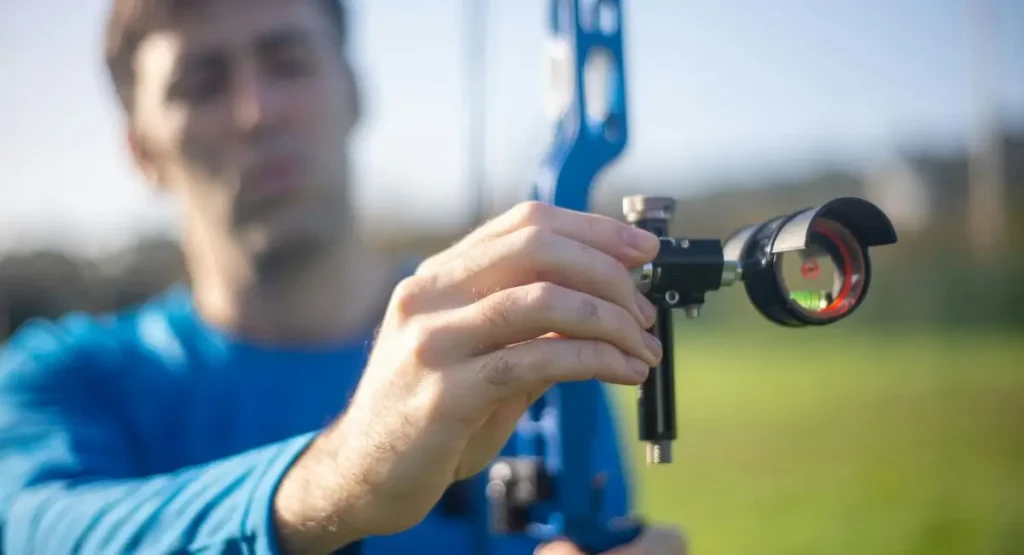

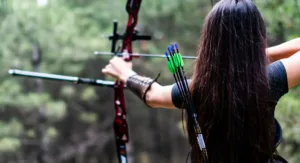
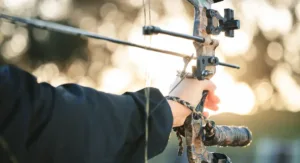

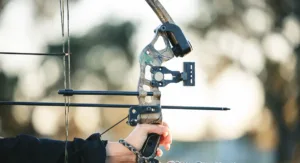
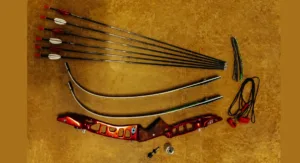
1 thought on “Mastering the Art of Bow Sights Maximizing Archery Accuracy”
Comments are closed.